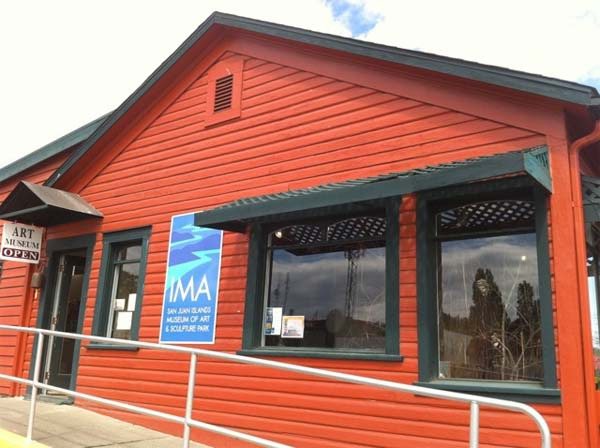The old building on First and West streets — you probably know her as the Museum of Art or the old Neil’s Images building — will be moved to American Camp on Nov. 18. A significant event, indeed, but to fully grasp the significance we need to peel back a few layers.
She has not only witnessed history, but been on the front lines: European contact, the settlement era, the treaty with the region’s First Nations, the birth of an American city, the resolution of a territory dispute between two world superpowers, the development of an island town, and now the efforts to preserve those pieces of our story.
She was built in what is now Bellingham in 1856, crafted of wood from centuries-old trees that were part of the bounty of resources that had sustained the region’s First Peoples and attracted a flood of newcomers. The First Peoples built longhouses and canoes, the settlers built townhouses and ships.
And the United States Army built a post, Fort Bellingham.
Henry Roeder, the German-born mill owner at Whatcom Creek falls, milled her logs in 1856, and in August that year she became a home for officers stationed at Fort Bellingham.
In 1867, during the joint military occupation of San Juan Island, she was moved to American Camp as a second officers quarter. In 1872, the occupation ended and in 1875 she and other buildings at the American and British camps were auctioned off. National Park historian Mike Vouri said the buildings yielded a total of $1,896.14, deposited into the First National Bank of Portland, Ore., by Major R.N. Batchelder of the U.S. Army Quartermaster Corps.
Vouri said records first show her at West and First streets on May 26, 1884, the home of Adam Brown, who ran the first sawmill in Friday Harbor; thanks to electricity generated by the mill, electric lights were first turned on in town in 1894.
Where the house was between 1875 and 1884 is not known. “It could have been someplace else,” Vouri said. “That’s the mystery — where was it between 1884 and its life on the post?”
Photographs through the years show the house in its various commercial iterations — from blacksmith shop to art gallery. Doug Bison, a prominent American Indian sculptor, had his gallery here for a while before moving across town. The building was a venue for the Lummi Arts Festival in 2008; the artists’ ancestors knew this building when it was at Fort Bellingham, knew the trees that were milled to take form as an officers quarters. The San Juan Islands Museum of Art occupied the site from May 25, 2009 to Oct. 17, 2010; the first exhibit featured works by Puyallup/Tulalip artist Shawn Peterson. Later exhibits featured photographer Art Wolfe and the late artist Helen Loggie.
“I did love it. It had a good energy,” museum director Wendy Smith said. “It was so light. It had so many windows and it got great sun. It was a happy place that way. Some wonderful things happened there, some amazing art and artists came through there. There was a lot of joy.”
And now, on Nov. 18, the house will return to American Camp, like an old-timer returning to the place of her childhood after so many years away. She is being donated to the National Park by the owners of Friday Harbor House. There are no plans for the corner right now, according to Amy Wenaweser of Columbia Hospitality, which manages Friday Harbor House.
According to Nickel Bros. House Moving, the move will take place from 3-7 p.m. The route: First Street, Court Street, Spring Street, Argyle Avenue, Cattle Point Road, American Camp. Nickel Bros. asks that islanders not park their vehicles along any of these streets during the move; your vehicle may be towed. If you have any questions, call Nickel Bros. at 378-3328.
Only the original building on the corner will be moved; the addition on First Street will be demolished, Vouri said. The Brown House, now known as Historic Structure 10, or HS 10, will be situated next to HS 11, where it once overlooked the ground where soldiers drilled and assembled for inspection.
The interior of HS 11 is expected to be refurbished within a year or two, Vouri said. Eventually, both buildings will be open for public tours.
Familiar ground for the old house, but an entirely new role: “It will bring more character to officers row,” Vouri said, “and will give visitors a stronger sense of officers row.”
In Friday Harbor, her home for at least 126 years, the old building is on the town’s inventory of historic sites. Her move to American Camp will be a bittersweet moment for local preservationists.
“It will have an impact on the historic district, but it’s wonderful that it’s going to be relocated back to the camp,” town Historic Preservation Officer Sandy Strehlou said. “It’s always sad to lose a building that’s been in Friday Harbor that long. The alternative was that the building could be facing demolition when Friday Harbor House expands. So I’m pleased the building is going to go home to an even more appropriate site on the island, and restored to help people understand the history of this place.”




